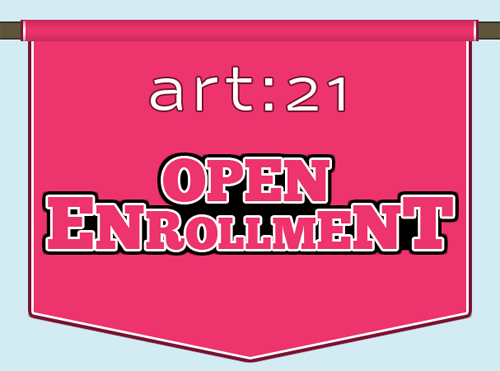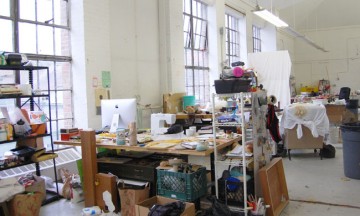Preface (or Subtext).
I am a first year MFA candidate in the Sculpture Department at Cranbrook Academy of Art. Located in the middle of the Detroit suburbs, its beautiful brick buildings and expansive grounds seem like an anomaly within otherwise banal surroundings. With no classes, structure, tests or GPAs, Cranbrook’s curriculum consists of a full-time studio practice, critiques, reading groups, and learning from peers. Because of this, many students draw comparisons between attending the program and a monastic lifestyle. The Academy consists of ten departments, each working under one “artist in residence,” or mentor. A lot of exchange occurs between the departments, and visiting artists as well as weekly lectures and student shows provide a wealth of viewpoints and liveliness.
I. Goodday sir!
There is a scene towards the end of Willie Wonka and the Chocolate Factory where Gene Wilder, who plays Wonka, screams at the earnest and kind-hearted Charlie Bucket, “You lose, you get nothing, good day sir!” In my first semester studying sculpture at Cranbrook, I have found myself immersed in a paralyzing fear of grad school–or rather, of being rejected in grad school. It’s as if at any moment, Gene Wilder is going to pop into my studio and shout, “You lose, you get nothing, good day sir!” I feel like a fake. I feel like I know nothing. These are normal feelings. Not only do other students share my plight, but so do the authors of a book that serves as a security blanket to many artists: Art & Fear, by David Bayles and Ted Orland. I constantly refer back to its dog-eared pages, re-reading my highlighted mantras. So yes, this fear is normal, others share it, but it’s still a bitch. Here, I look to Charlie Bucket as my guide. After being ostracized by Wonka and screamed at to leave, he takes a stand with virtue as his guide, and returns Wonka’s beloved Everlasting Gobstopper. He stands up in the face of his fears to do that which he believes in.
[youtube:https://www.youtube.com/watch?v=M5QGkOGZubQ]
II. Stirring Deep Waters
My studio is open. Peers with studios on the same floor as mine have to pass through my space to get to theirs. From my desk, I can hear other students microwaving frozen Trader Joe’s meals and bantering in the kitchen. A large-paned window on one wall looks out to the wood shop, metal shop, and spray booth – which is also the place where people tend to congregate for a post-crit smoke. I am not alone. Often as artists, we have to make a lot of really bad work to get to the good stuff. Flush out the impulses that we need to get out of our systems, hoping something more interesting will come about as a result. In the fish bowl of grad school, someone is always watching. Unexpected guests pop into the studio, and god forbid my best work isn’t displayed. This feeling often halts experimentation and making bad (but necessary) work, although we are told to follow every impulse, to try everything, and break all the rules. “Making art can feel dangerous and revealing. Making art is dangerous and revealing. Making art precipitates self-doubt, stirring deep waters that lay between what you know you should be, and what you fear you might be,” write Bayles and Orland in Art & Fear.
In The Lagoon Cycle, Helen Mayer Harrison and Newton Harrison also use the metaphor of “stirring deep waters” as stand-ins for the complexity of human culture and survival: “An estuarial lagoon is the place where fresh and salt waters meet and mix. It is fragile meeting…. It’s a collaborative adventure. Its existence is always at risk…life in the lagoon is tough but rich. Like all of us, it much improves its existence, very creatively, with the materials at hand – but the material keeps changing. Only the improvisation remains constant.” Although this poetic metaphor is not exclusive to graduate art school, it certainly applies. Filled with changes, fear, risks, and fragility, graduate school is a collaborative adventure that’s tough as nails, BUT RICH! As graduate students at Cranbrook, we were all transplanted from our own little corners of the world – from the people, places, and private art-making practices with which we were comfortable, into this exposed, fear-inducing environment. Why you ask, would we place ourselves in an environment that brings all of our insecurities and fears to the surface? Because what else would we do? Clearly, every student at Cranbrook has a compulsive desire to be making, and that is where the beauty of this place is cornerstoned. The fact that other artists are constantly in and around my space isn’t casual. This is an intentional, crucial part of the learning and creative process; because so much of the experience at Cranbrook is being really really really REALLY close to other makers…all the time. It is learning from them, and feeding off of each other’s momentum. A shared excitement, a subtle flare of competition is in the air of these historic, Eliel Saarinen-designed buildings–these deep stirring waters.
III. Spaghetti and Meatballs
A recent visitor to our campus mentioned that we all obviously deserve to be here (we got accepted, didn’t we?), but now the weight of this institution rests on our shoulders. I think this weight brings my worst fear to the surface: That I lack the skills to make art. That I am a fake. I graduated with a BA in Graphic Design, with only a couple of contemporary art theory and sculpture classes under my belt. I had never used a chop saw, and never learned to weld. I still don’t know the difference between an impact driver and a drill, let alone have the knowledge to contribute to the ongoing debates over which drill is better: Makita or Dewalt. Despite my illiteracy in these topics, I currently find myself in a sculpture department, among those that have harnessed the aforementioned skills to a T. Lo, Art & Fear comes to my aid again, by stating simply and boldly: “Whatever you have is exactly what you need to produce your best work. There is probably no clearer waste of psychic energy than worrying about how much talent you have – and probably no worry more common.”
To eschew the waste of psychic energy, I find reassurance in looking at our bizarre actions in the studio: while I dip plastic dollar-store ponies into crock pots of melted wax, my studio mates are gluing inflatable dolphins together, painting leaves with nail polish, and licking their walls. For me, the humor of these actions helps to battle my art-making-paralysis. I mean really, it’s absurd to intellectualize a toy dipped in wax, but then again, what else would we be doing? The pony in wax is nonsensical, and also makes the most sense in the world. There is a purity in these actions – in this process – that transcends the over-intellectualization that is grad school.
Last year I worked at an Italian restaurant chain. I used to describe it as a slightly fancier version of Olive Garden. I had to wear tuxedo pants. I remember a co-worker’s wise words to me when I became flustered at a snide comment made by a customer. “It’s only spaghetti and meatballs,” he told me. I try to remember this when the paralysis seeps in; when I think that everything that comes out of my hand or head must be magically perfect because I’m in graduate school now: the big leagues. Sure, we must intellectualize our every move, and read countless pages of art theory about queer post-humanism and neo-regionalism, but let’s not forget the moments in our past that called us to be artists, and the freedom that came with that. There was a purity in these moments that completely filled us with wonder and called us to make work that could in turn be wondrous. Or perhaps we can trace this moment back even further, to a time when our crayon drawings would be pinned up on the fridge – it was just spaghetti and meatballs then, right?
Last week I had my first critique. I think in a way this MFA student rite-of-passage bookended my paralysis. Post critique, I felt simultaneously naked and empowered, stunted and propelled. It’s an extreme challenge to sweep up all of the bits of information, references, constructive criticism, and associations that result from a critique, and channel them in such a way that you come out better on the other side. This too can induce a kind of paralysis. Like ripping a band-aid off, it hurt, but now that the band-aid is off, I feel more initiated into the nuanced culture of this strange and good place. Sure, all eyes are on us, but they should be. So, let’s stop wasting our psychic energies on fears, and embrace the stirring waters together, in these tough and rich times. After all, it’s only spaghetti and meatballs.







Pingback: Open Enrollment « Lindsay Preston Zappas
Pingback: » Baby girl not a lot just a little bit